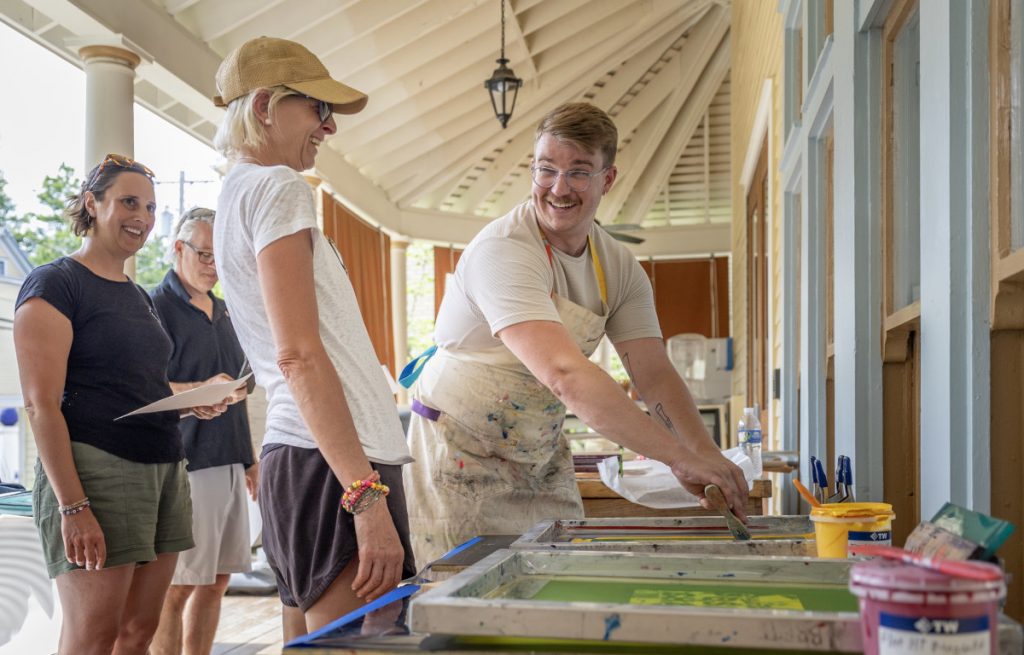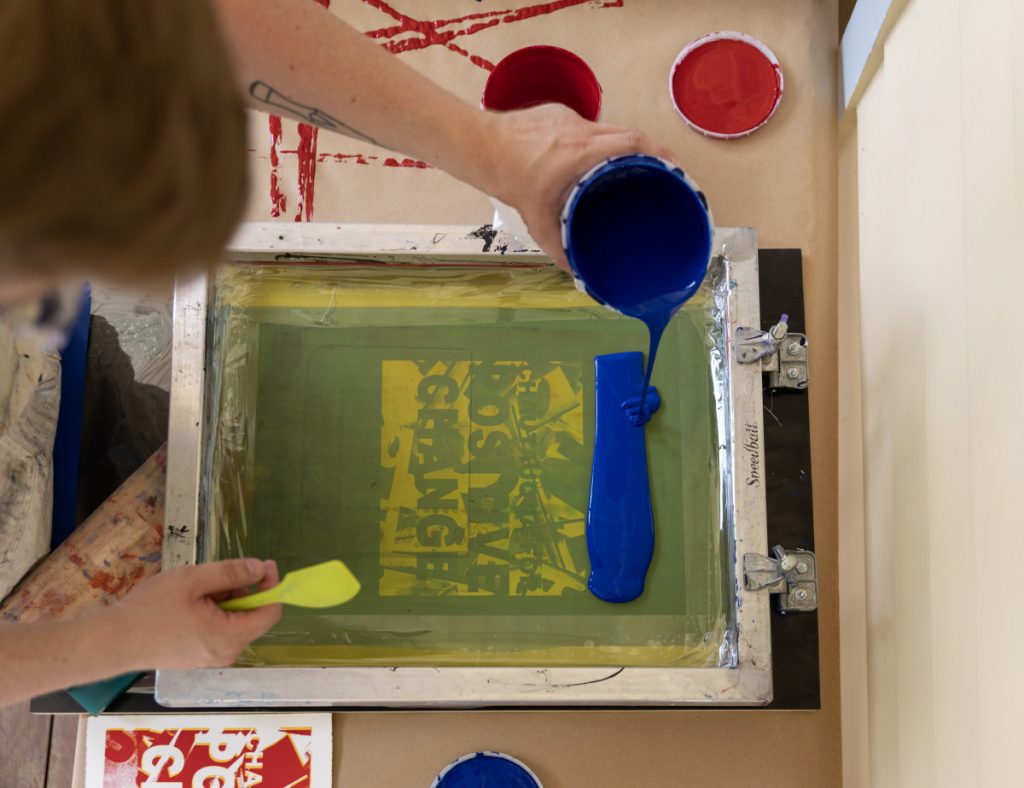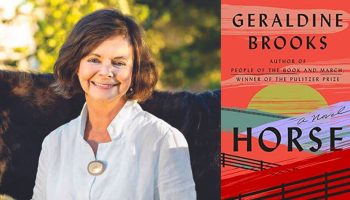
Julia Weber
Staff writer
Chautauqua Visual Arts’ School of Arts program may be on pause this summer as CVA searches for its new artistic director, but this season’s alumni exhibition paints a portrait of Chautauqua’s intricate, diverse and expansive visual arts community.
Chautauqua Visual Arts alumnus and self-described “print-media artist” Brett Taylor hosted a Posters for Positive Change printmaking masterclass last week on the back porch of Fowler-Kellogg Art Center.
The hands-on workshop took place a day after the opening of “Positive Change: CVA Alumni” exhibition, curated by Erika Diamond, associate director of CVA galleries. Taylor has work featured, and the exhibition is available to view on the second floor of Fowler-Kellogg Art Center.
The class demonstrated the screenprinting process and allowed attendees to print their own copies of a design titled “Chautauqua for Positive Change.” About 15 people attended the workshop and gained hands-on experience using screenprinting techniques with Taylor’s guidance.
Starting with blank sheets of thick, rough-edged paper, participants used a squeegee to layer on a thin coat of yellow ink through the mesh and over the stencil, producing the base of the print.

Following the base layer of yellow ink, participants were given more freedom to layer on coats of red and blue in order to create completed prints. Taylor explained that ordering the coats differently would lead to different relationships between colors and ultimately would produce different effects. The final result produced “Chautauqua for Positive Change” prints in a vibrant and dynamic composition of primary colors.
In 2019, Taylor was a resident artist at Chautauqua Institution, where they not only explored the technical and creative aspects of printmaking, but also engaged in productive dialogue and conversation with others.
“We’re so polarized, and that was something that Chautauqua really taught me,” they said. “ … It was not about looking up and down all the time, but actually looking left and right, and that we can actually learn so much from each other.”
After Taylor’s residency, they joined the CVA team in 2020, teaching printmaking online amid the onset of the COVID-19 pandemic. Educating others about printmaking in such a nontraditional setting made them think about the accessibility of printmaking and how that can be expanded.
“I want to invite all voices, but specifically marginalized and othered voices, into a print space to be able to have a dialogue – not only with the process, but the other artists who are working in there, so it was all about fostering this community,” they said.
Taylor’s interest in accessibility in art doesn’t stop in the printmaking room. They are also conscious of the inaccessibility of galleries – specifically, the lack of seating in galleries.
They draw from lived experience, having navigated space in a wheelchair after having bone cancer as a child.
“There’s something really significant about who gets to sit with the work and for how long and who’s allowed into these gallery and institutional spaces,” they said. “ … Do they support people who are differently abled even if you can’t see it?”
Their passion for accessibility in art spaces goes hand-in-hand with the work that they create, which examines spectrums – primarily spectrums of gender and of ability and disability – at both a personal and societal level. Taylor focuses much of their art on the temporary and transitional spaces in which bodies reside.
Taylor abstracts the body in their work, distorting the vision of the ideal body and, by extension, challenging the confines of the stereotypes that enforce these boundaries.
Taylor also uses art as a method of advocacy. In the wake of “Don’t Say Gay” legislation in Florida, Taylor decided to respond through prints with a very direct message: Say Gay.
“The ambiguity (of my earlier prints) was too generous in some ways,” they said. “ … We needed the text to be very specific, and understanding that having no political position is a political position.”
Through both the alumni exhibition and their masterclass, Taylor hopes their prints will invite viewers to engage with themselves and others about the pieces.
“We’re all constantly shifting and moving, and we’re really complex human beings, and so I think the work has to stem from yourself. These are internal questions that are then being explored in the work, but inviting other people in to have a productive dialogue around it,” Taylor said. “… Art isn’t there to answer a question, but provide one.”




